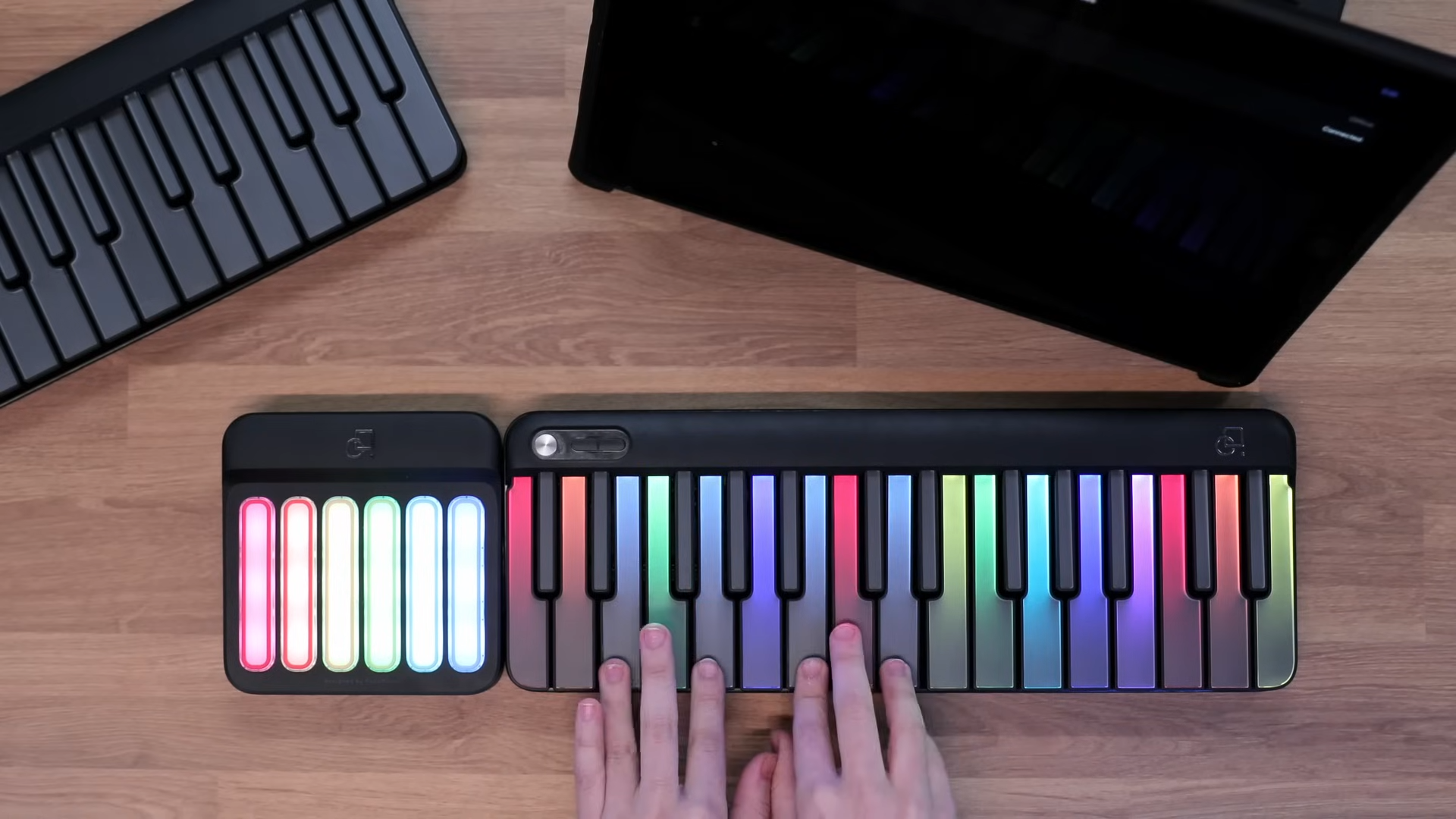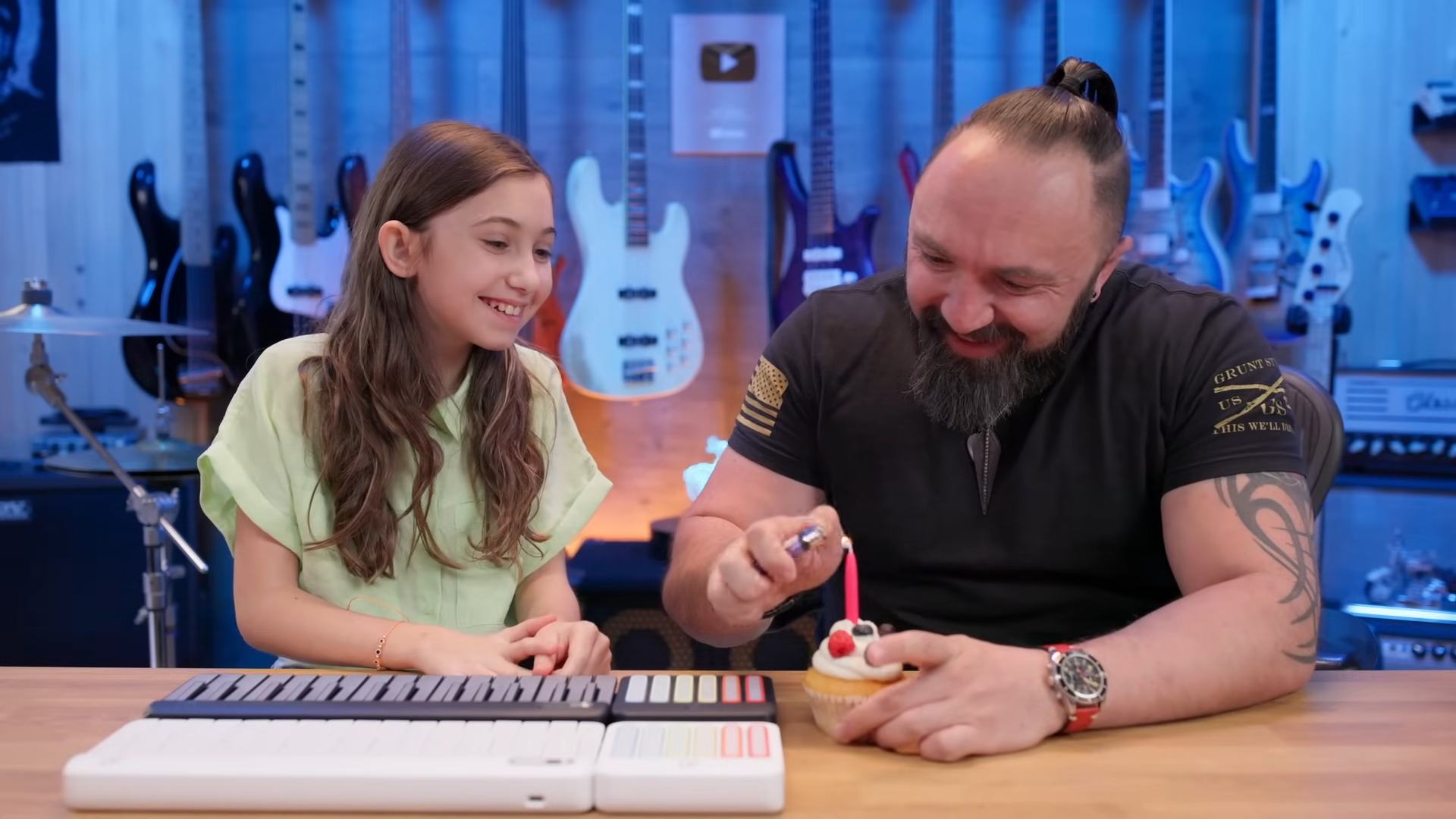
If you’re just starting out, It’s easy to mix up a MIDI controller with a smart keyboard. Both have piano‑style keys. Both connect to phones, tablets, and laptops. Both can help you make music. But they’re designed for different first steps, and the choice you make now will shape your learning curve for the next few months.
This guide breaks down MIDI controller vs smart keyboard for beginners in plain English. what each device is, how they feel to play, what they cost, and which one fits your goals (learning songs, producing beats, or both).
You’ll also get setup checklists, a 30‑day starter plan, and quick answers to common questions like what is a keyboard controller, and what is MIDI keyboard.
A MIDI keyboard (often called a keyboard controller) is a piano‑style device that doesn’t produce sound by itself. It sends MIDI data—what note you played, how hard you hit it, and other controls—to software on your phone, tablet, or computer. That software (a DAW or an instrument app) generates the sound.
If you came wondering what is a keyboard controller or what is MIDI keyboard, that’s it: a controller that tells software what to play.
A smart keyboard blends a playable keybed with learning tools built in—think light‑up keys, an app with guided songs, practice games, and sometimes one‑tap chords so you can sing and play quickly. Many smart models also act as MIDI controllers when you want to create in a DAW.
Here’s a straight comparison of midi keyboard vs keyboard designed for beginners:
|
Feature |
MIDI Controller |
Smart Keyboard |
|
Sound source |
Needs phone/tablet/computer app |
Uses an app too, but adds guided learning |
|
Learning tools |
Depends on third‑party apps |
Built‑in follow‑lights, courses, feedback |
|
Setup friction |
Low to moderate (drivers, DAW) |
Very low (pair, pick a song, follow lights) |
|
Practice motivation |
Up to you and the app you pick |
Game‑style lessons, streaks, song goals |
|
Pads/knobs for production |
Often included |
Sometimes included; focus is on learning |
|
Noise control |
Headphones via device |
Headphones, tempo control, pause‑and‑wait lessons |
|
Doubles as controller |
Yes (primary role) |
Yes (secondary role) |
|
Best first win |
Making loops/beats in a DAW |
Playing full songs quickly with lights |
If your main question is keyboard vs MIDI controller from a beginner’s view: a controller is a tool for software, while a smart keyboard is a tool for learning that also talks to software.
You’ll see big ranges, but here’s a realistic snapshot to frame midi controller vs keyboard costs for first‑time buyers:
If your priority is lowest cash outlay, a small controller wins. If your priority is fast, structured learning, a smart keyboard often delivers more value for beginners over the first 3–6 months.
Both can be compact and quiet with headphones; smart models often have couch‑friendly Bluetooth pairing that encourages daily practice.
Pick a MIDI controller if you…
Pick a smart keyboard if you…
Whether you choose MIDI controller vs smart keyboard for beginners, here’s how to get real results in a month.
Week 1: Right‑hand melody with lights at slow tempo. Finish a simple song end‑to‑end.
Week 2: Add left‑hand notes or one‑tap chords. Loop the hardest 4 bars.
Week 3: Hands together at 75–85% speed. Start Song #2.
Week 4: Dynamics (soft verse, louder chorus), complete Song #2. Record a take.
Milestone: 2 full songs, steady rhythm, growing confidence.
Week 1: Learn your DAW or mobile app basics. Record an 8‑bar drum loop and a right‑hand piano line.
Week 2: Add simple left‑hand chords (triads). Quantize lightly; practice playing to a metronome.
Week 3: Try a second sound (e.g., strings or e‑piano). Arrange verse/chorus structure.
Week 4: Polish timing; automate volume on the chorus. Export a 60‑second track.
Milestone: 1–2 short tracks, basic DAW fluency, chord shapes under your fingers.
Choosing between MIDI controller vs smart keyboard for beginners comes down to your first win:
Either path can grow with you. Start with the device that keeps you practicing this week, not the one you think you “should” buy. When you’re ready to try a guided‑learning approach, check out a modern smart keyboard with lessons.
A digital piano usually has built‑in sounds and often has weighted 88 keys to mimic an acoustic. A controller needs software to make sound. For pure learning and space‑saving, a smart keyboard or compact controller can be better early on.
No. Many beginners do great with 49–61 keys at first. If you want classical pieces later, you can expand or upgrade.
Yes. Most modern smart models send MIDI over USB or Bluetooth, so you can record into a DAW when you’re ready.
Usually yes at the entry level, but remember the value of built‑in lessons and follow‑lights if your goal is to learn songs fast.
For learning to play, a smart keyboard with guidance is easier. For producing tracks, a controller with your favorite app is a great fit.
Read more

Traditional Piano vs Digital Piano Cost: What to Know
If you’re comparing traditional piano vs digital piano cost, you’re probably asking two things: how much are pianos up front, and what will you keep paying over the years? This guide breaks down re...

How to Learn Chords on a Smart Keyboard (Beginner Guide)
If you want to sound like a real player fast, start with chords. This guide shows you how to learn chords on a smart keyboard using simple shapes, guided lights, and short practice routines. You’ll...